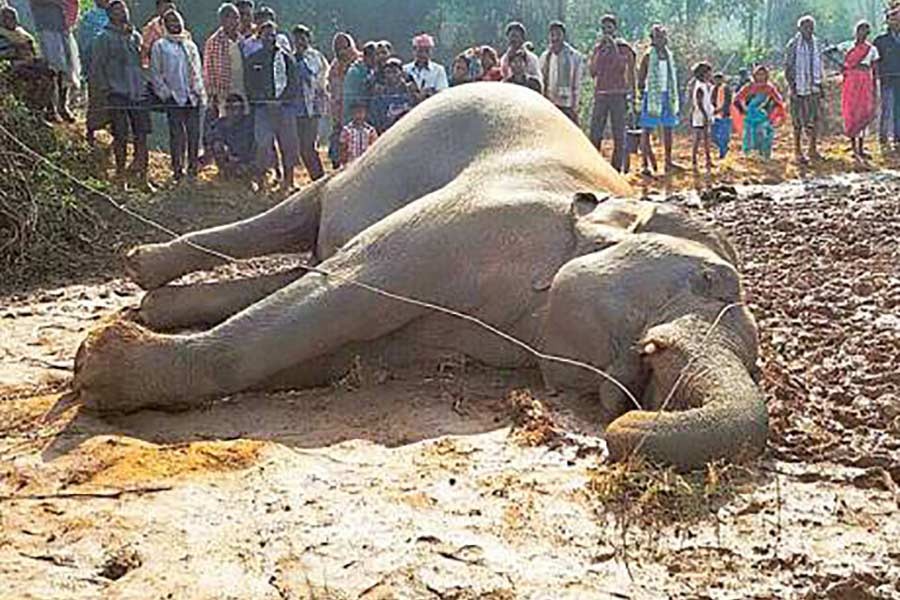At least 227 people with 63 elephants died in human-elephant conflicts over the period of last 13 years in the country, revealed a Forest Department source.
The Forest Department data also showed that the year 2016 alone witnessed deaths of 16 people and four elephants.
According to Forest Conservator of Wildlife and Nature Conservation in Dhaka Jahidul Kabir, trans-boundary elephants, faced with food crisis, find no suitable habitat after entering Bangladesh from India.
"So, they come down to paddy fields and engage in conflicts with human beings," he observed.
Kabir also said elephant-human conflict has been the ultimate consequence of their habitat loss as the people here have already grabbed the elephant habitat.
The incidents of wild elephants getting electrocuted is also on the rise along Bangladesh's border.
Regarding this, he said the incidents has recently marked a rise as farmers are increasingly installing generators and electric wires in their paddy fields to save their crops from elephants that come from Indian side.
Official sources say two wild elephants were found dead in the frontier area of Sreebardi upazila in Sherpur on October 6 and 8 respectively.
Both the elephants died after they came in contact with live wire placed on an Aman paddy field to protect it from animals.
On August 13, another elephant was found dead at Haluahati village in Sreebardi upazila.
Mr Jahidul Kabir said three elephants were electrocuted recently in Sherpur while another was killed in 2015.
Talking about dealing with the situation, he said the Forest Department has already seized the generators and wires installed on paddy fields so that they cannot kill any more elephant there.
Noting that there is no alternative to creating awareness among people to prevent conflicts with wild elephants, he said human-elephant conflicts will ease when local people become aware of elephants and their necessity.
The forest official said the Forest Department has already proposed the government to allocate increased fund and provide compensation to local people so that they can effectively manage elephants.
According to a new study, 'Status of Asian Elephants in Bangladesh' jointly conducted by International Union for Conservation of Nature (IUCN) Bangladesh and Bangladesh Forest Department, there are 39 natural crossing points that elephants use regularly to migrate between Bangladesh and its neighbouring countries.
Among them, about 33 crossing points are along the Indian border and the remaining six are on the Myanmar frontier area.
Most of the crossing points fall in Bangladesh's northern part.
About the vagrant trans-boundary elephant-crossing points, the study revealed that seven vagrant points were identified along the international boundary of northeastern districts of Bangladesh.
Stray elephants from India inadvertently entered Bangladesh by breaking the barbed-wire fences or crossing rivers.


